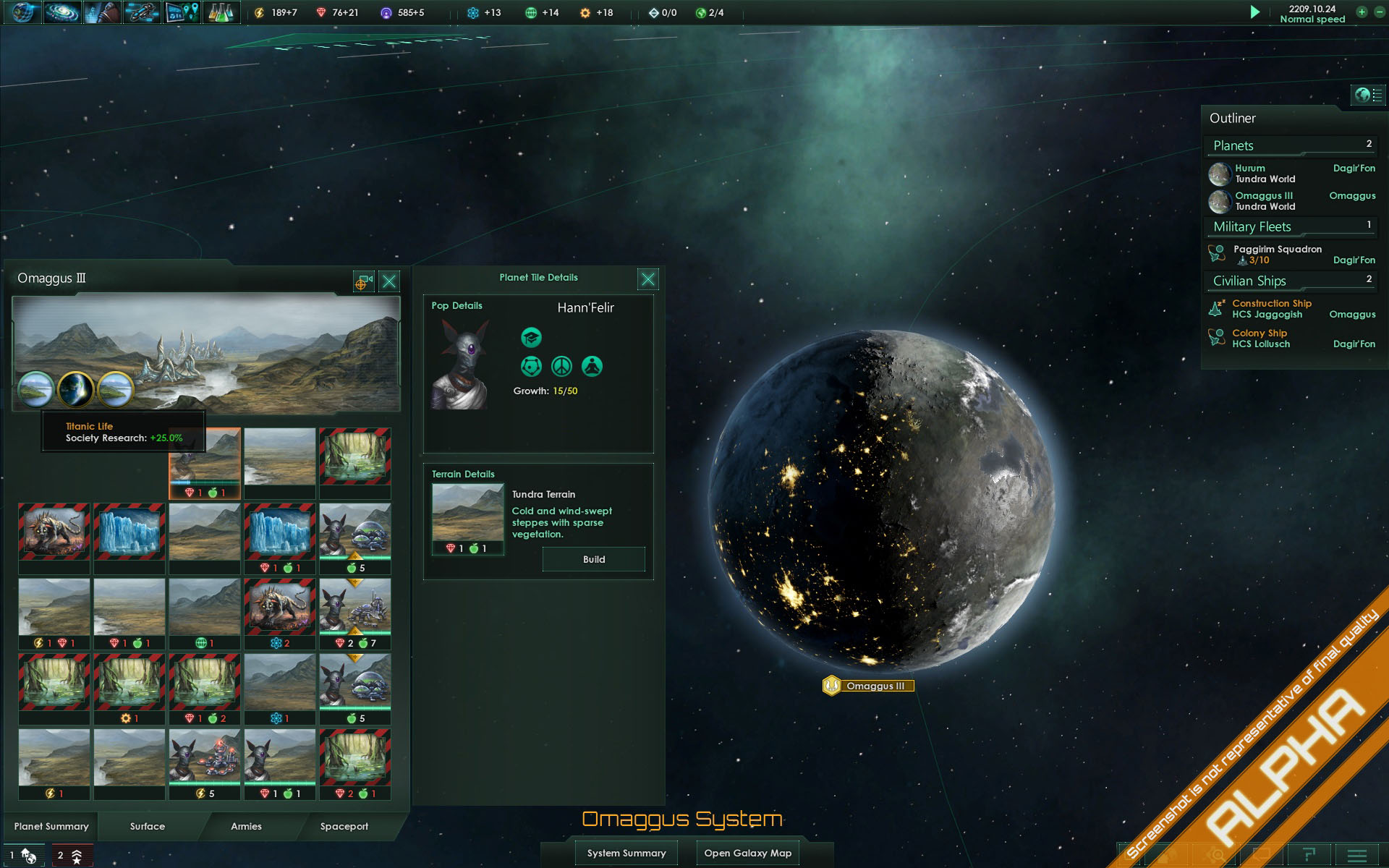Stellaris dev explains how planets work

Paradox only started its series of Stellaris dev diaries a few weeks ago, and already it's on number 9. This one expands on the galaxy generation explanation from the third diary, getting down to the level of individual planets and their makeup.
First up, each habitable planet is made up of tiles. You can clear blocked tiles of mountains to create more space, and work a tile by placing a Pop (population unit). You'll want to use some of these tiles to place buildings, and take advantage of adjacency bonuses to maximise efficiency.
Planets are differentiated by modifiers which add flavour and stat bonuses. A planet can have "particularly large lifeforms", or "Titanic Life", which adds a bonus to society research.
Another way to differentiate planets is their resources, which are generated as deposits and spawn on planets depending on their type and modifiers. You obviously have to travel to more than one planet to collect all of the resources you'll need, and some are more likely to be found in certain parts of the galaxy (e.g. inside a nebula).
You can still find resources on uninhabitable planets via their orbital resource slot that allows you to place a Mining Station or Research station in orbit around the planet. The devs promise to tell us more about rare resources (and the Spaceport) in the next diary.
The biggest gaming news, reviews and hardware deals
Keep up to date with the most important stories and the best deals, as picked by the PC Gamer team.

If you love big trucks, establishing trade routes, and the phrase 'post-apocalyptic survival business simulator' then I've got just the strategy RPG for you

Blizzard veteran David Kim's strategy comeback with Battle Aces is 'very personal:' 'I just can't accept... the end-all peak of RTS is StarCraft 2 and nothing can ever be better'
Most Popular






